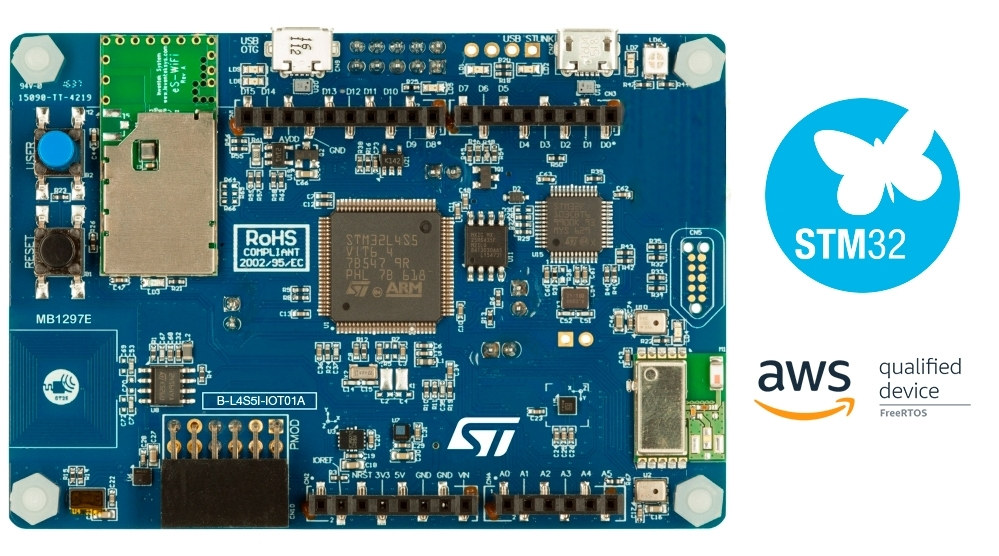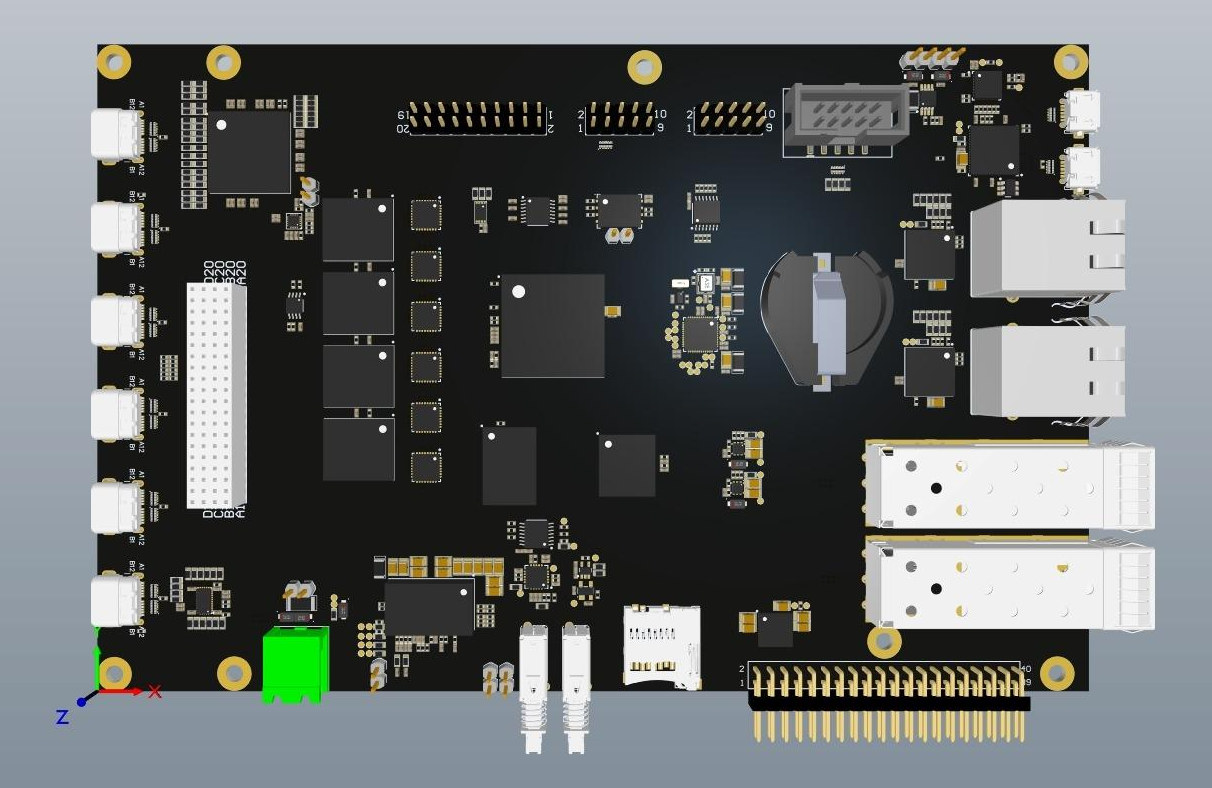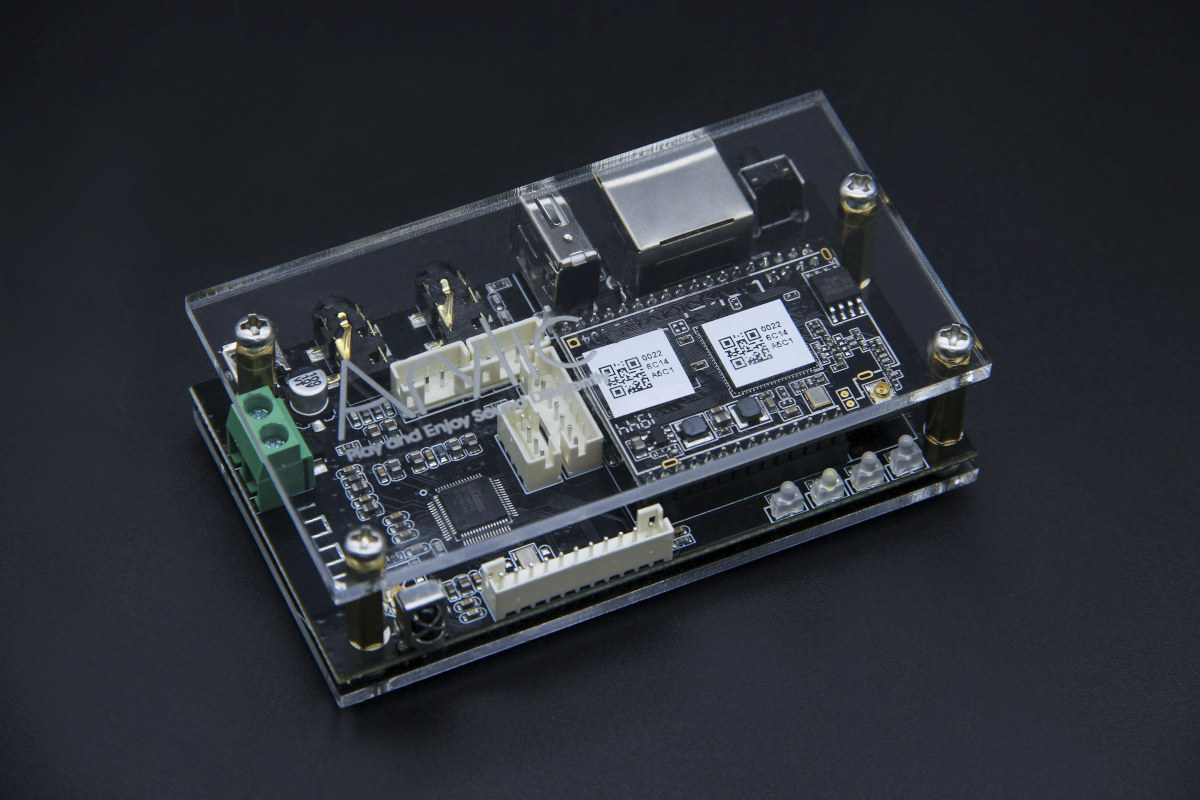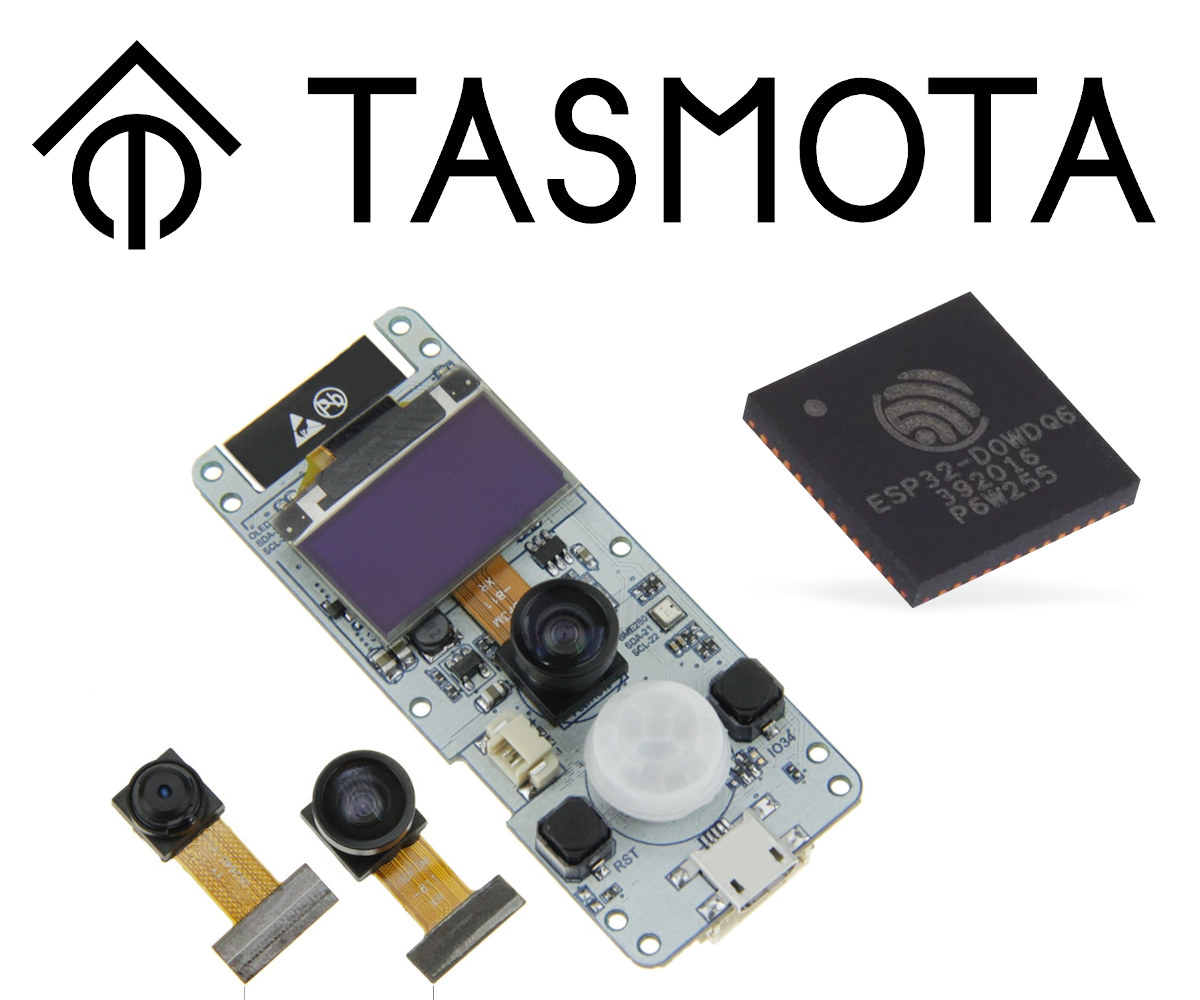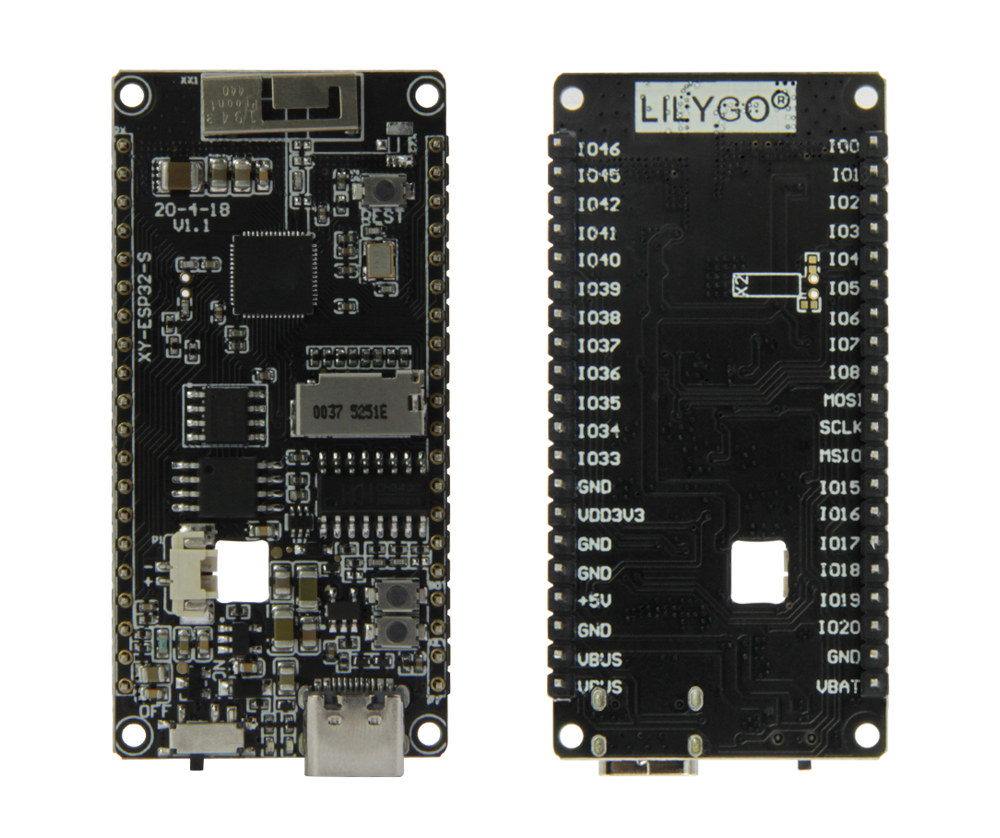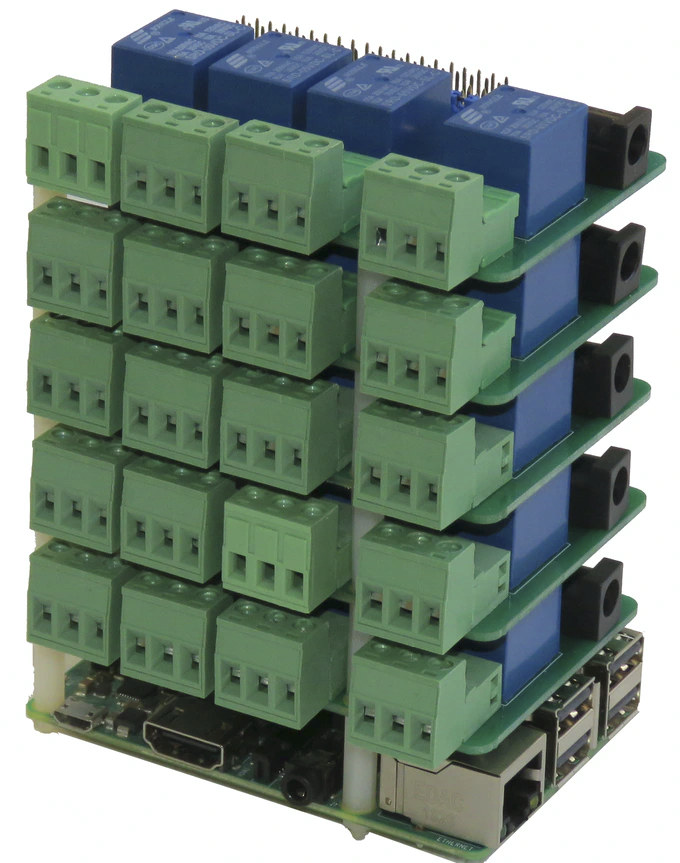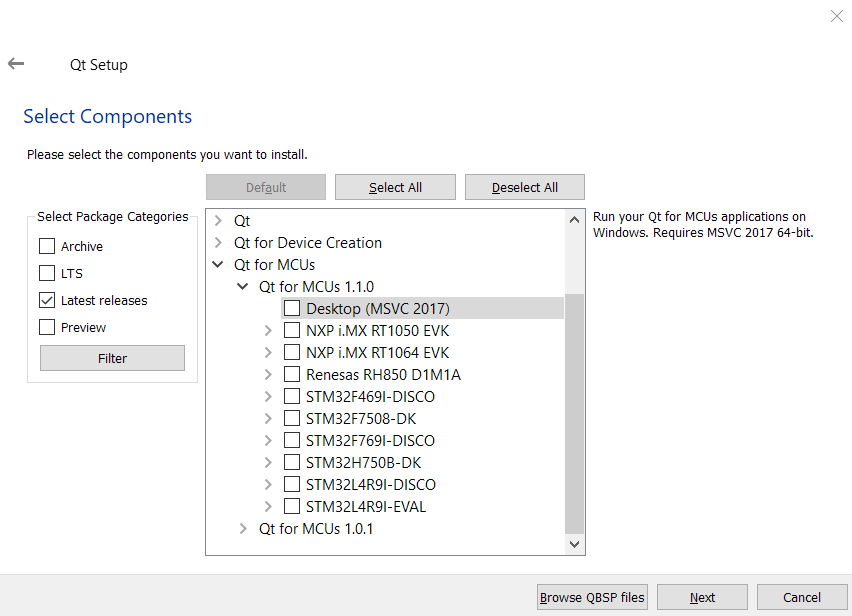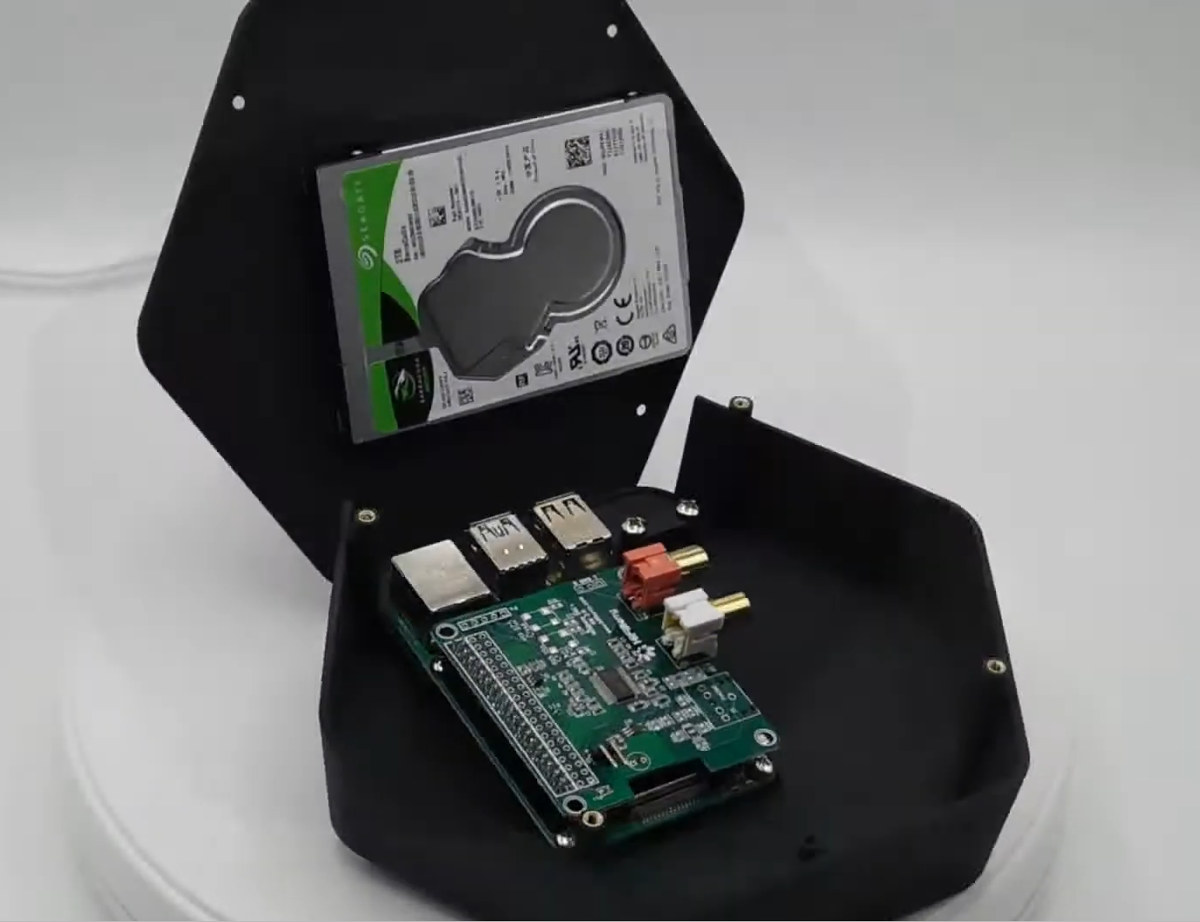STM32 IoT Discovery Kit Runs AWS-Ready FreeRTOS, Supports Arduino and Pmod Expansion Boards
STMicroelectronics STM32 IoT Discovery Kit is supposed to ease software development for IoT nodes thanks to a qualified port of FreeRTOS integrated into the STM32Cube ecosystem, and ready to connect to Amazon Web Services (AWS). The hardware is comprised of an STM32L4+ Cortex-M4F microcontroller, various MEMS sensors, a secure element, and offers WiFi, Bluetooth 4.2, and NFC connectivity. STM32 IoT Discovery Kit (B-L4S5I-IOT01A) key features and specifications: MCU – STMicro STM32L4+ (STM32L4S5VIT6) Arm Cortex-M4F microcontroller with 2 MB Flash, 640 KB RAM in LQFP100 package storage – 64 Mbit Quad-SPI Flash Connectivity Bluetooth 4.1 module (STMicro SPBTLE-RF) 802.11 b/g/n compliant Wi-Fi module (Inventek ISM43362-M3G-L44) Dynamic NFC tag based on ST25DV04K with its printed NFC antenna USB – Micro USB OTG port STMicro Sensors 2 digital omnidirectional microphones (MP34DT01) Relative humidity and temperature sensor (HTS221) 3-axis magnetometer (LIS3MDL) 3D accelerometer and 3D gyroscope (LSM6DSL) 260-1260 hPa absolute digital output barometer (LPS22HB) […]


